CS:GO Tournament Schedule
| Name | Prize money | Date |
|---|---|---|
 Dust2.in #24 27.07.25
$ 1500
|
$ 1500 | 27.07.25 |
 NA RS #7 27.07.25
$ 5000
|
$ 5000 | 27.07.25 |
 CCT S3 EU #4 29.07.25
$ 50000
|
$ 50000 | 29.07.25 |
 ESEA Advanced S54 30.07.25
-
|
- | 30.07.25 |
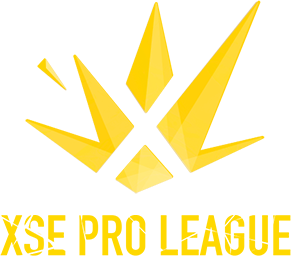 XPL S5 30.07.25
$ 10000
|
$ 10000 | 30.07.25 |
 INUI Showdown 2025 #2 01.08.25
$ 50000
|
$ 50000 | 01.08.25 |
 BLAST Rising 2025 Fall
Mongolia, Ulaanbaatar
01.08.25
-
|
- | 01.08.25 |
 BLAST Bounty 2025 Fall
Malta, Copenhagen
05.08.25
$ 500000
|
$ 500000 | 05.08.25 |
 CCT S3 NA #1 07.08.25
$ 10000
|
$ 10000 | 07.08.25 |
 CCT S3 SA #3 07.08.25
$ 20000
|
$ 20000 | 07.08.25 |
 TPG S3 10.08.25
$ 86606
|
$ 86606 | 10.08.25 |
 Dust2.us EM #3 11.08.25
$ 10000
|
$ 10000 | 11.08.25 |
 CFE 2025
Brazil, Rio de Janeiro
13.08.25
$ 42378
|
$ 42378 | 13.08.25 |
 NA RS #8 16.08.25
$ 5000
|
$ 5000 | 16.08.25 |
 EOS 10 17.08.25
$ 5878
|
$ 5878 | 17.08.25 |
 CCT S3 EU #5 19.08.25
$ 50000
|
$ 50000 | 19.08.25 |
 EWC 2025
Saudi Arabia, Riyadh
20.08.25
$ 1250000
|
$ 1250000 | 20.08.25 |
 REC 2025 21.08.25
$ 22500
|
$ 22500 | 21.08.25 |
 Compass 2025 Fall 25.08.25
$ 25000
|
$ 25000 | 25.08.25 |
 BLAST Open 2025 Fall
United Kingdom, London
27.08.25
$ 400000
|
$ 400000 | 27.08.25 |
 FRAG S15
Uzbekistan, Tashkent
30.08.25
$ 10000
|
$ 10000 | 30.08.25 |
 CCT S3 OCE #2 01.09.25
$ 6574
|
$ 6574 | 01.09.25 |
 CCT S3 SA #4 04.09.25
$ 20000
|
$ 20000 | 04.09.25 |
 GB 2025 P4 06.09.25
$ 50000
|
$ 50000 | 06.09.25 |
 NA RS #9 06.09.25
$ 5000
|
$ 5000 | 06.09.25 |
 CCT S3 EU #6 09.09.25
$ 50000
|
$ 50000 | 09.09.25 |
 FPG #2
Serbia, Belgrade
09.09.25
$ 1250000
|
$ 1250000 | 09.09.25 |
 UKIC League S7 10.09.25
$ 3434
|
$ 3434 | 10.09.25 |
 TPG S4 12.09.25
$ 87677
|
$ 87677 | 12.09.25 |
 TC 2025 Summer
Czech Republic, Prague
12.09.25
$ 7605
|
$ 7605 | 12.09.25 |
 Yuqilin PoB S1
China, Yancheng
13.09.25
$ 20000
|
$ 20000 | 13.09.25 |
 SLSS 2025 Fall
Hungary, Budapest
13.09.25
$ 500000
|
$ 500000 | 13.09.25 |
 BCS
Poland, Gdansk
13.09.25
$ 11690
|
$ 11690 | 13.09.25 |
 CCT S3 EU Contenders #1 17.09.25
$ 5000
|
$ 5000 | 17.09.25 |
 CCT S3 EU #7 19.09.25
$ 50000
|
$ 50000 | 19.09.25 |
 ESN NC 2025
Mongolia, Ulaanbaatar
22.09.25
$ 10000
|
$ 10000 | 22.09.25 |
 BB LDL #3
Russian Federation, Moscow
25.09.25
$ 50000
|
$ 50000 | 25.09.25 |
 EPL S22
Sweden, Stockholm
27.09.25
$ 1000000
|
$ 1000000 | 27.09.25 |
 CCT S3 EU #8 30.09.25
$ 50000
|
$ 50000 | 30.09.25 |
 XPL S6 01.10.25
-
|
- | 01.10.25 |
 CAC 2025 01.10.25
$ 400000
|
$ 400000 | 01.10.25 |
 Roobet Cup 2025 13.10.25
$ 500000
|
$ 500000 | 13.10.25 |
 TWC 2025 15.10.25
$ 1000000
|
$ 1000000 | 15.10.25 |
 MNM 2025 Fall 15.10.25
$ 250000
|
$ 250000 | 15.10.25 |
 NA RS #10 18.10.25
$ 5000
|
$ 5000 | 18.10.25 |
 PGL Masters Bucharest 2025
Romania, Bucharest
24.10.25
$ 1250000
|
$ 1250000 | 24.10.25 |
 INUI Showdown 2025 #3 01.11.25
$ 50000
|
$ 50000 | 01.11.25 |
 IEM Chengdu 2025
China, Chengdu
03.11.25
$ 1000000
|
$ 1000000 | 03.11.25 |
 SM 2025 10.11.25
$ 350000
|
$ 350000 | 10.11.25 |
 FRAG Club S4
Uzbekistan, Tashkent
10.11.25
$ 3092
|
$ 3092 | 10.11.25 |
 BLAST Rivals 2025 Fall
Hong Kong, Chek Lap Kok
10.11.25
$ 350000
|
$ 350000 | 10.11.25 |
 Compass Dubai 2025 19.11.25
$ 675000
|
$ 675000 | 19.11.25 |
 ECL S50 20.11.25
$ 290000
|
$ 290000 | 20.11.25 |
 MСR 2025
Czech Republic, Brno
21.11.25
$ 51390
|
$ 51390 | 21.11.25 |
 SL Budapest Major 2025
Hungary, Budapest
24.11.25
$ 1250000
|
$ 1250000 | 24.11.25 |
 ESL Impact S8
Sweden, Stockholm
28.11.25
$ 250000
|
$ 250000 | 28.11.25 |
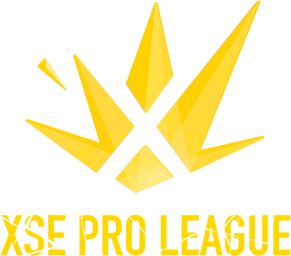 XPL S7 25.12.25
-
|
- | 25.12.25 |
 BLAST Bounty 2026 Winter
Denmark, Copenhagen
12.01.26
-
|
- | 12.01.26 |
 IEM Kraków 2025
Poland, Kraków
28.01.26
$ 1000000
|
$ 1000000 | 28.01.26 |
 INUI Showdown 2026 #1 01.02.26
$ 50000
|
$ 50000 | 01.02.26 |
 PGL Cluj-Napoca 2026
Romania, Cluj-Napoca
09.02.26
$ 1250000
|
$ 1250000 | 09.02.26 |
 ESL Event 2026 #2 23.02.26
-
|
- | 23.02.26 |
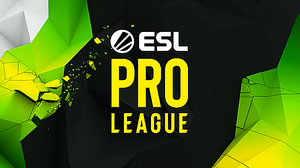 EPL S23 01.03.26
$ 275000
|
$ 275000 | 01.03.26 |
 BLAST Open 2026 Spring 16.03.26
$ 400000
|
$ 400000 | 16.03.26 |
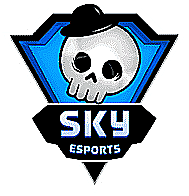 SE 2026 #1 30.03.26
-
|
- | 30.03.26 |
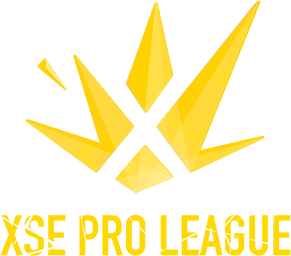 XPL S8 02.04.26
-
|
- | 02.04.26 |
 PGL Bucharest 2026
Romania, Bucharest
02.04.26
$ 1250000
|
$ 1250000 | 02.04.26 |
 ESL Event 2026 #3 12.04.26
-
|
- | 12.04.26 |
 IEM Brazil 2026 13.04.26
$ 300000
|
$ 300000 | 13.04.26 |
 Compass Qatar 2026 20.04.26
$ 600000
|
$ 600000 | 20.04.26 |
 FPG #3 21.04.26
-
|
- | 21.04.26 |
 BLAST Rivals 2026 Spring
United States, Fort Worth
01.05.26
$ 350000
|
$ 350000 | 01.05.26 |
 PGL Astana 2026
Kazakhstan, Astana
07.05.26
$ 1600000
|
$ 1600000 | 07.05.26 |
 ESL Event 2026 #4 10.05.26
-
|
- | 10.05.26 |
 IEM USA 2026 11.05.26
$ 300000
|
$ 300000 | 11.05.26 |
 ACL 2026 12.05.26
-
|
- | 12.05.26 |
 CAC 2026 18.05.26
$ 400000
|
$ 400000 | 18.05.26 |
 SL StarSeries S21 25.05.26
-
|
- | 25.05.26 |
 Major Summer 2026 08.06.26
$ 1250000
|
$ 1250000 | 08.06.26 |
 FPG #4 13.07.26
-
|
- | 13.07.26 |
 BLAST Bounty 2026 Summer
Denmark, Copenhagen
20.07.26
-
|
- | 20.07.26 |
Recent CS:GO Tournaments
| Name | Prize money | Participants | Date |
|---|---|---|---|
 Urban Contenders #7 25.07.25
$ 1500
|
$ 1500 |
4
|
25.07.25 |
 CCT S3 SA #2 24.07.25
$ 20000
|
$ 20000 |
24
|
24.07.25 |
 IEM Cologne 2025
Denmark, Cologne
23.07.25
$ 1000000
|
$ 1000000 |
24
|
23.07.25 |
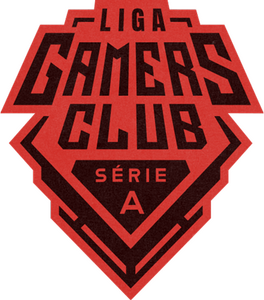 GCL Série A July 2025 22.07.25
$ 1810
|
$ 1810 |
8
|
22.07.25 |
 Exort Series #14 20.07.25
$ 10000
|
$ 10000 |
16
|
20.07.25 |
 KBM PL 20.07.25
$ 14372
|
$ 14372 |
8
|
20.07.25 |
 EPIC.LAN 45
Denmark, Kettering
19.07.25
$ 4689
|
$ 4689 |
8
|
19.07.25 |
 Fragadelphia 19
Denmark, Windsor
19.07.25
$ 35000
|
$ 35000 |
8
|
19.07.25 |
 EPL S29 Div.2 19.07.25
$ 10000
|
$ 10000 |
16
|
19.07.25 |
 United21 S35 18.07.25
$ 10000
|
$ 10000 |
17
|
18.07.25 |
CS:GO eSports Tournaments: Unrivaled Glory Through the Years of History
Counter-Strike is probably the most popular eSports when you consider the number of competitions held during the year. Moreover, the schedule can include both local events and pro-level tournaments, which gather millions of fans watching streamers and spending hundreds of dollars for tickets in the front rows of the stadium. CS:GO eSports has significantly increased its prize pools as of late, which has only increased the motivation of famous gamers.
An In-Depth Look into Professional CSGO Tournaments
While experienced eSports fans know a lot about the CS GO tournaments, it may not be easy for beginners to find their way through the difficult system of competition. So if you are willing to make things easier and understand who is who, we’ll try to explain it to you.
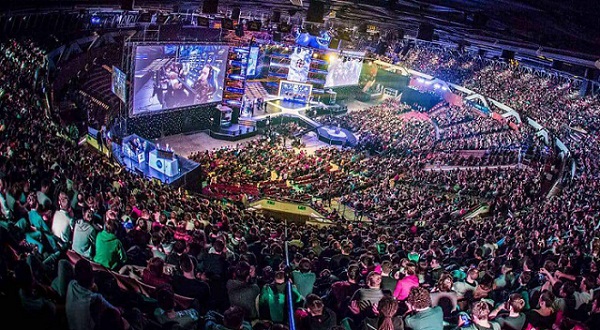
Rules and Formats of the CS:GO Tournaments
The rules and the formats for different CS:GO events vary. The primary reason for that is that CS: GO tournament can be organized not only by Valve, which is the game-owning company but by any other organizer. This system is called an open tournament. Unlike the franchised league system, which implies only game publishers can organize the tournaments, CS:GO can be initiated by anyone interested in the issue.
While such an approach to the tournaments’ organization allowed for increasing their number and the eSports popularity, it also brought about some problems for the fans as many of them have a hard time tracking the upcoming CSGO tournaments. Besides, different organizers establish different CS GO tournament rules and structures for the championships, thus making things still harder to understand.
However, once or twice a year, all organizers work together to host the major CS:GO tournament, which plays the role of the world championship for the game and attracts the most successful and top-tier teams.
Based on the format, the tournament is held, they fall into several types:
- Online events, which are typically held with no top-tier teams participating.
- Studio LAN tournaments that comprise large online events and small LAN championships with two high-grade teams participating.
- Stadium CSGO LAN tournament can boast of top-level teams participating to fight for a significant prize pool.
- Major tournaments are generally held offline attracting the best CS:GO teams with huge prize money. Such tournaments are super-prestigious and only well-established organizers can be involved with them.
By participating in Minors and LAN events, the teams get the chance to qualify for Majors and fight for the title of the world champions and multi-million dollar prize pools.
The Prize Money Sizes Compared to Other Disciplines
The Counter Strike tournaments have a long history. If analyzing it, it becomes clear that the interest in this eSports discipline has been steadily growing throughout the years. However, this hasn’t been reflected much in the prize pool of the major CS GO tournaments. The prize money of the competition remains one of the lowest in eSports.
The average prize pool of Major Championships stays within the range of 1-2 million US dollars. And while this sum may sound impressive, it hardly correlates with the popularity of this discipline. Besides, keeping in mind that Valve, which is the game publisher, established more than 40 million dollars in the prize pool for its other title tournament (Dota 2), many professional gamers and eSports fans cannot understand the reasons the company underestimates the discipline so much.
Qualifications for CSGO Championships
In 2020, the rules for qualifying for the major CSGO championships changed, and Regional Major Rankings were introduced. They are divided into three regions: the Americas, Europe, and Asia-Pacific. The goal of such rearrangements was to allow the best teams from around the globe to show their skills and make their way to the Majors. So now, every team willing to enter the championship should get on the shortlist of the Regional Major Rankings.
The regional competitions are usually held online and last from a couple of weeks to several months. Due to such an approach to the qualification games, the risk of a weak team getting to the most prestigious events of the year is minimal. Why? Because each participating team earns points for their performance in the qualification championships. So only top-tier gamers make it to the top, thus receiving their chance to battle for the major monetary prize of the year.
The only drawback is that the number of teams that can qualify from different regions is not the same.
Basic Maps Played in the Competitions
Counter Strike Global Offensive fans know the game features about 27 maps overall. However, only seven of them belong to the so-called active duty map pool that is played in the championships. Let’s take a closer look at each of them.
- Inferno – is one of the oldest maps, which was introduced in 1999 but has undergone some visual upgrades to meet the growing expectations of the new CS: GO players.
- Mirage is known to be the only map that was featured in 15 Major Championships.
- Nuke is another iconic map played in the counter Strike competitions. Presented in 1999, it changed a lot, yet preserved its elegance to date.
- Overpass was designed specifically for competitive play and became the first defuse map of the new type.
- Vertigo stands out due to being the only active duty map that can be fallen off of.
- Ancient, which was introduced in 2020 as a part of the White Fang operation and replaced Train in 2021 when the White Fang operation was completed.
- Anubis replaced Dust II on the competitive maps pool list in November 2022.
Regular Leagues in CS:GO eSports
The structure of CS:GO eSports includes tournaments and leagues. Speaking about the latter, there is a variety of them, differing in formats, popularity, and rating.
- Perfect World Arena Premier League is a Chinese league representing small LAN events and larger online championships.
- ESL Impact League combines three divisions (European, North American, and South American) and two qualifiers (South African and Oceanic).
- ESL Challenger League unites 48 international teams and is considered a direct path to the ESL Pro League.
- ESL Pro League is the largest within CS:GO community. It gathers 44 teams from around the globe under its roof and plays the role of a trampoline to the most prestigious events of the year.
Major and Minor Tournaments: Basic Differences
Provided there are more than 6700 CSGO tournaments, it may be hard to keep track of them without a CS GO tournament schedule (you can look it up on our website). But even having it, you may want to grade them by the level of importance. This is only possible if you know whether the tournament is Minor or Major. How are they different, and how to tell them apart? Let’s see.
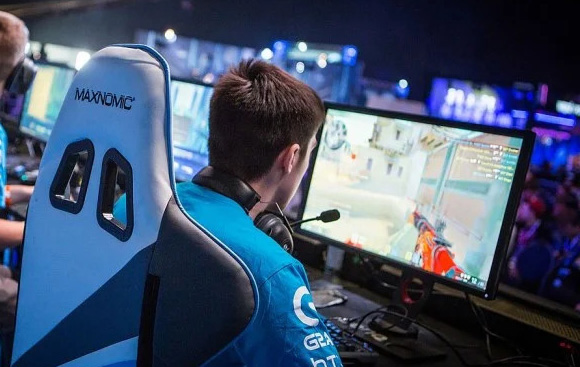
The first thing to mention is the ratings of the teams participating. Minors, as the name suggests, give space for teams of all levels to show off. Naturally, top-tier CS:GO players rarely show up at such competitions. Still, they become a perfect ground for new teams to show what they are worth and make their way to the discipline top. Majors, on the other hand, are CSGO pro tournaments for participants who have already proven their high level and are ready to battle for the GS GO tournament prize money.
Another dissimilarity is the prize pool. The average amount of prize money for Minors is $50 000. Some small competitions may lack a prize pool, but they allow gaining points to move up in the teams’ rating. In Majors, the prize pools get tremendously bigger, starting from $250 000. The Major events sponsored by Valve can boast prize money reaching a million dollars and more.
Also, Minors and Majors differ in their structure. Minors comprise four stages:
- Round one (round-robin competition), where the winners are defined using the best-of-three format;
- Round two uses the same scheme to send the three best to the Finals;
- Finals are where the teams are split into two groups to determine the top 3 of each;
- Play-offs determine the best of five teams that will enter a higher league.
Majors, in their turn, comprise three stages:
- The Challengers Stage, where 16 teams play to determine the 8 best who proceed to the next stage.
- The Legends Stage is a rivalry between the eight teams from the previous stage and their eight competitors coming from the preceding Major event. Again, only eight teams will make it further.
- The Champions Stage – a single elimination basket for determining the absolute best.
Knowing these details, you’ll have no trouble differentiating between Minors and Majors.
Amateur CS Tournaments for Beginner Teams
Every professional CSGO player once was a beginner. However, this didn’t stop them from entering the large scene and getting to the top of the world’s ratings. Every beginner team playing CS can repeat their success if they have their goal cleared and do their best to achieve it.
Aside from the Minors and Majors, event organizers often hold tournaments CSGO for amateurs. Due to such competitions, every team gets the chance to show what it’s worth and break into professional-grade CS: GO eSports.
The Top 3 Most Famous CSGO Tournaments
PGL
PGL Major Competitions are among the most expected CSGO events of the year. However, such recognition didn’t appear without effort. The PGL company went a long way from organizing minor events to establishing a world-class competition. The revolutionary changes happened in 2017 when the event gained Valve sponsorship and managed to increase the CS: GO tournaments’ prize pool to $1 million, which was a mind-blowing sum for any Counter Strike Global Offensive competition. However, that was not the maximum. In 2021, The PGL Stockholm tournament participants fought for a $2 million prize pool, which is the historical maximum for Counter-Strike.
The tournament format comprises two Swiss group stages. This means the teams should win their games to move on to the following stage. But if a team is defeated three times, it leaves the competition. Only the best ones get to the knockout stage.
ESL One
ESL One tournament was first held in 2014. In the first three years of its existence, Valve was sponsoring it. In 2016, however, their partnership ended, but this wasn’t an obstacle for the event organizer to set a million-dollar prize pool for the 2016 championship.
Until 2020, all the events within the ESL One tournament were held offline. But with the pandemic starting, they moved offline. Unfortunately, this has become a strong blow for the tournament and the year 2020 was the last time CS: GO players could participate in this tournament. In spring 2021, it continued under a different brand.
IEM
IEM boasts the title of the longest-running eSports tournament in the world. It was established in 2007 and is still thriving. The format that IEM has chosen involved hosting numerous qualifying events eventually leading to the main championship. The competitions are held around the globe, selecting the best players from every region.
The First Counter Strike Tournament: How Did the Legendary eSports Start?
Counter Strike major debuted at Cyberathlete Professional League in 2006. While this tournament is the earliest, it was not sponsored or designated by Valve, so it is often called “unofficial”.
The event was preceded by a series of qualifiers crowned by the CPL Winter 2006 major tournament, which took place in Dallas, USA. The prize pool of the event reached $150,000. The team that took the main prize and the winning title was Fnatic – the Finnish team based in the UK.
Speaking about the first official CS tournament recognized by Valve, it took place only 7 years later, in 2013. The game developer announced the competition with the prize money reaching $250,000, which was raised via crowdfunding from the Counter-Strike community. This time, the tournament was held in Sweden. By the way, the championship winner was also the Swedish team – Fnatic.
CS championship history goes many years back. However, this discipline continues its development, attracting more and more people to its huge community. If you want to know more about this exciting world of this game, our website has all the information you may want to know, including the list of CSGO tournaments, results of past events, prize pools, and so much more.
CS events are run by an open tournament system, which allows for the competitions to be organized by different companies. This helps increase the number of tournaments and spread interest in the discipline.
The next major CS:GO championship is the BLAST.tv Paris Major 2023, with a prize pool of $1,250,000. The event will be held in Paris from May 8-21, 2023.
PGL Major Stockholm 2021 is considered the biggest tournament in the history of this eSports.
Yes. They are held online.
The average prize money for major tournaments in professional Counter-Strike is $1,000,000.